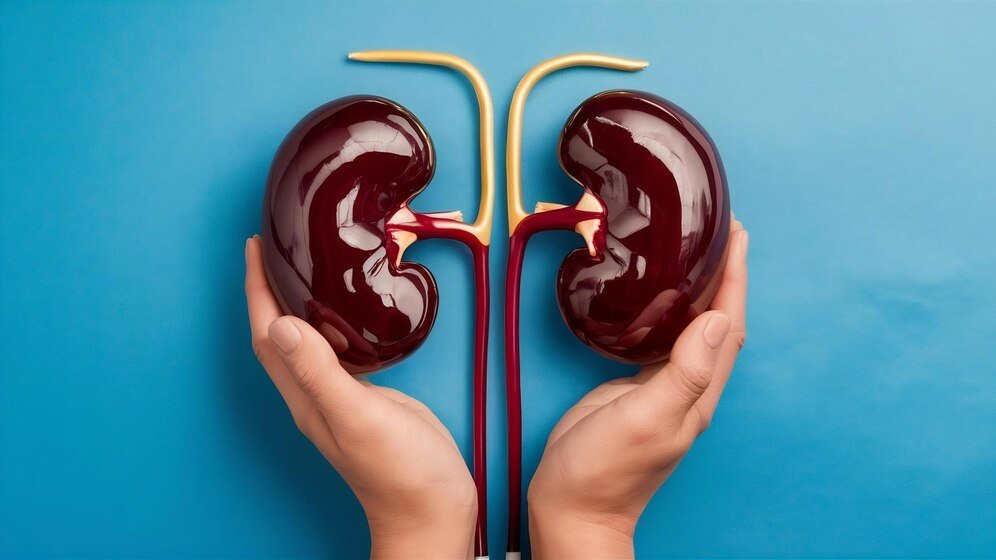The kidneys play a crucial role in filtering waste and maintaining a balance of electrolytes in the body. Any condition that disrupts their normal function can lead to significant health concerns. One such condition is Ureteropelvic Junction (UPJ) Obstruction, where a blockage occurs at the point where the ureter (the tube carrying urine from the kidney to the bladder) connects to the renal pelvis (the part of the kidney that collects urine).
What is UPJ Obstruction?
UPJ obstruction is a condition that restricts the flow of urine from the kidney to the ureter, causing urine to accumulate in the kidney. This can lead to kidney swelling (hydronephrosis) and, if untreated, potential damage to kidney tissue. UPJ obstruction can occur in one or both kidneys and is most commonly congenital, meaning it is present at birth. However, it can also develop later in life.
Causes of UPJ Obstruction
- Congenital Factors:
- A common cause in newborns and infants is an abnormal development of the ureteropelvic junction during fetal growth. This can result from a narrowing of the ureter or the presence of an additional blood vessel compressing the ureter.
- Acquired Factors:
- Scar Tissue: Injuries or surgeries affecting the kidney or ureter can lead to scar formation, narrowing the UPJ.
- Kidney Stones: Stones lodged at the junction may block urine flow.
- Tumors: Growths near the kidney or ureter can obstruct the passage.
- Infections: Chronic infections may lead to inflammation and scarring.
Symptoms of UPJ Obstruction
The severity of symptoms varies based on the extent of the blockage. Common symptoms include:
- Pain: Dull or sharp pain in the back or side (flank pain). It may worsen after fluid intake.
- Urinary Issues: Difficulty in urination or reduced urine output.
- Recurrent Infections: Repeated urinary tract infections (UTIs).
- Nausea and Vomiting: Often associated with kidney swelling.
- Abdominal Swelling: Caused by hydronephrosis.
- Blood in Urine: Hematuria may occur in some cases.
In newborns and infants, symptoms might be less obvious but can include a palpable mass in the abdomen, poor feeding, or irritability.
Diagnosing UPJ Obstruction
A range of diagnostic tools is used to confirm UPJ obstruction:
- Ultrasound: A primary imaging technique to detect kidney swelling (hydronephrosis).
- CT or MRI Scan: Provides detailed images to identify the exact location and severity of the blockage.
- Nuclear Renal Scan: Assesses kidney function and evaluates urine flow.
- Voiding Cystourethrogram (VCUG): Rules out other causes of urinary obstruction.
Treatment Options
The treatment for UPJ obstruction depends on the severity of the condition and the patient’s symptoms.
1. Observation
- In mild cases, especially in infants, the obstruction may resolve on its own. Regular monitoring through ultrasounds ensures the condition does not worsen.
2. Surgical Intervention
- Pyeloplasty: The most common procedure for severe UPJ obstruction. It involves removing the narrowed or blocked segment and reconnecting the healthy parts of the ureter and kidney. This can be performed via open surgery, laparoscopically, or robot-assisted techniques.
- Stenting: A temporary stent may be placed to ensure urine flow during recovery.
3. Endoscopic Procedures
- In some cases, minimally invasive techniques using an endoscope can clear the blockage.
4. Management of Secondary Causes
- If UPJ obstruction is due to kidney stones, infections, or tumors, addressing these underlying issues is crucial.
Long-Term Outlook
With appropriate treatment, most individuals with UPJ obstruction can achieve normal kidney function and lead healthy lives. Regular follow-ups are essential to monitor kidney health and ensure the obstruction does not recur.
UPJ obstruction is a manageable condition, especially when detected early. Understanding its causes, symptoms, and treatment options empowers individuals to seek timely medical intervention. If you or your loved one experiences symptoms of UPJ obstruction, consult a healthcare professional for an accurate diagnosis and appropriate care. Early action can make all the difference in preserving kidney health.

